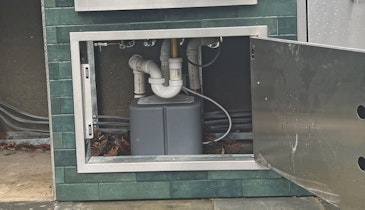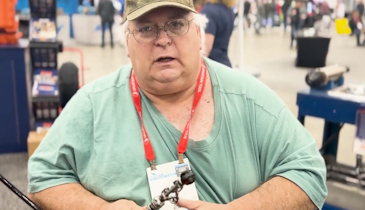Interested in Residential Plumbing?
Get Residential Plumbing articles, news and videos right in your inbox! Sign up now.
Residential Plumbing + Get AlertsWhat’s the most dangerous part of working a cable machine? Building up torque.
Torque is defined as “a turning or twisting force.” In a cable machine, this force is generated when the reel spins and cable is fed into the pipe, but an obstruction stops the rotation of the cutting blade. When this happens, the tension known as torque builds rapidly.
When controlled, torque helps power through tough blockages. However, when torque gets out of control it can ruin the cable, damage the cable machine or drain line, or injure the operator. Gaining experience and reading the manufacturer’s instructions on proper use and safety are the best ways to protect against dangerous torque build up, but learning more about the role torque plays in cable machine use can be helpful as well.
During drain cleaning, torque is necessary to get the job done, but it’s also a safety hazard. Cable machines with lower rpm will produce more torque and give the operator more reaction time once the cutting blade stops rotating. On the other hand, machines with higher rpm will provide less torque and give the operator less reaction time. Without operator action, the autofeed may try to force the cable and cutter to work their way through the blockage. This can force the blade to bore deep into an obstruction and get stuck. This is not the worst damage torque can do, but it can cost the operator the cable and blade.
If the blade cannot move, the rapidly building force works its way back to the operator and machine, looking for a point of least resistance to release the tension. As torque continues to build, the continually winding cable may loop over on itself in the line, within the reel, or onto an operator’s extremities. The results of such twisting range from a kinked or snapped cable to severed or broken body parts. Even worse, the cable can “throw” — shoot out the front of the machine and whip dangerously out of control. To prevent such actions, training by an experienced professional is crucial.
Once a drain cleaner has had training and experience, they will be able to identify how to best use torque to their advantage. If the blade doesn’t cut through an obstruction, most pros recommend pulling back on the cable to free the blade. With time, the operator will learn to feel when they should pull back just enough to let the torque-enhanced spin of the blade jump forward into an obstruction. The correct application of torque helps operators optimize the combined power of the spring-wound cable and the cutting end tool to tackle blockages — without damaging hardware or human life.
MyTana offers top-of-the-line cable machines with robust safety features. Check out the collection of machines, cables and blades today. Shop now.






